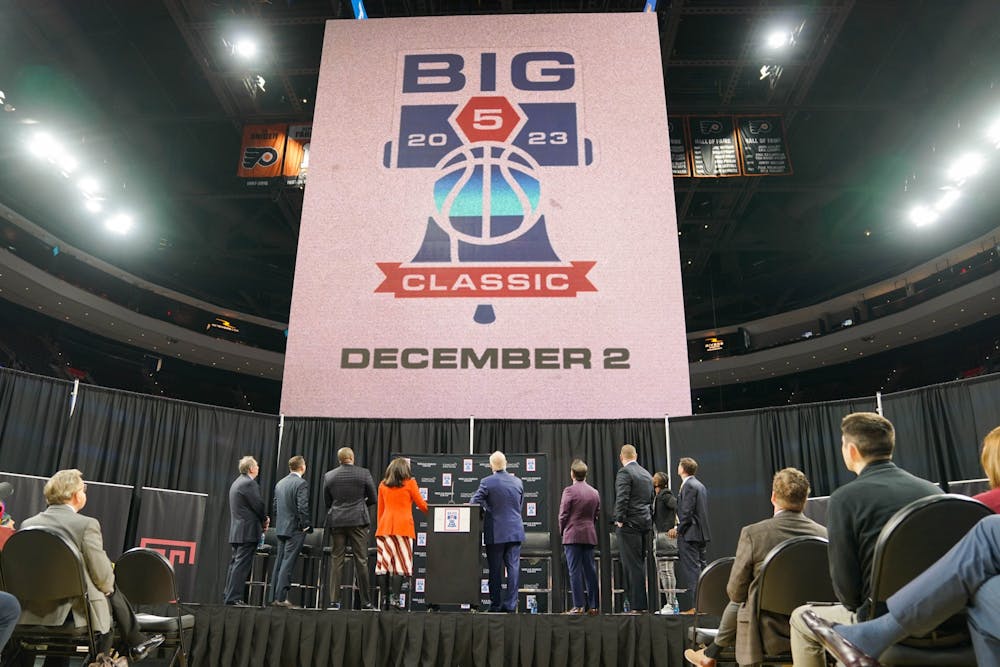
On Tuesday, the Big 5 announced some of the biggest changes to its signature men's basketball competition in its history. Firstly, it's name is no longer truthful; Drexel will now compete for a Big "5" championship alongside the five original members of Penn, La Salle, St. Joe's, Villanova, and Temple. But perhaps more substantially is the changing nature of the tournament.
In recent years, each school would play every other, with two games at home and two on the road. But now, teams will be split into pods of three and play the other two teams in their respective pod every year, one at home and one on the road. Then, the two teams that finish in the same place in each pod will play each other in a triple-header Big 5 classic, to be held at Wells Fargo Center. The match between the two teams that finished first in pod play will determine a winner.
Traditionalists will hate this. I get it.
These changes will likely take some getting used to, but the former structure of Big 5 play was fundamentally not working. Crowds were shrinking and engagement was at a near-record low. The new structure is an honest, if imperfect, effort to address these issues and reinvigorate the competition.
First, let's talk about how this can help address the declining interest Philadelphia had in the Big 5. Recent attendance, both in person and on television, was dwindling. One doesn't need to look any further than a sparsely-attended match between La Salle and Temple at the Palestra in Nov. 2022.
Another thing this change could help with is the competition's one-sided nature. Villanova has won at least a share of each of the last nine titles. Under the new system, where the champion is determined by a one-game playoff, there should be more randomness in determining a winner.
An underrated benefit the changes may bring is a positive impact in conference scheduling. St. Joe's and La Salle — who both play in the Atlantic 10 — are in different pods, limiting the chances they will play to a potential Big 5 Classic berth. In recent years, there has been confusion about the difference between when the schools played in conference versus when they mattered for the Big 5, and this should help eliminate that.
But the new competition is not flawless. For one, it seems overly catered to members with the most recent national success and largest national fanbase (cough, cough, Nova). By centering the tournament around a showcase — presumably on national TV — the Big 5 is handing the Wildcats a chance to improve their national standing. Furthermore, Villanova will only have to play three of the Big 5 games, not four, giving it more freedom in its non-conference schedule and more opportunities to play competitions like the Phil Knight Invitational.
I'm not saying all this will work. I don't know if it will. But I hope it does, because I wouldn't want the Big 5 to die the slow, painful death it appeared to be headed towards.
CALEB CRAIN is a sophomore sports editor studying history and statistics from Los Angeles. All comments should be directed to dpsports@thedp.com.
The Daily Pennsylvanian is an independent, student-run newspaper. Please consider making a donation to support the coverage that shapes the University. Your generosity ensures a future of strong journalism at Penn.
Donate







